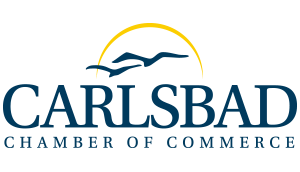Some companies believe that workers' comp claims are just a part of doing business, but there's a lot more to it than that.
Do you know that…
One workers' comp claim will affect your workers' compensation insurance premiums for the next three years of premiums?
Many claims are preventable with an ounce of prevention, and if identified and eliminated before there is an injury, they never require the pound of cure?
Estimates are that for every $1 spent directly on medical treatment of a workers' comp claim, there are anywhere from $3 to $9 lost to indirect costs such as absenteeism, presenteeism (impaired productivity), low worker morale and high turnover, increased burden on coworkers to fill in for the injured worker, recruitment and training costs, and many others?
How do you know what to look for with regard to injury prevention? First look at your company history. Has your company experienced any injuries or days lost due to worker injury? It is especially important to investigate, address and correct the problem if there are two or three injuries to workers in the same job description or department, otherwise OSHA might stick their nose in to give you some input (often in the form of fines and penalties).
A very important thing to remember is this: even if your company has not experienced any claims or injuries to date, if problems are not identified and are allowed to exist, it is only a matter of time until they come home to roost in the form of an injury. And, they are probably impacting your company's profitability every hour of every day in the form of impaired productivity. So your workers are earning 100 percent of their wages or salary, but if they are only working at 75 or 80 percent efficiency, this is impacting your company's productivity and there is no real way to measure this type of loss.
Ask your staff or middle management to observe and monitor their staff, looking for such indicators as reduced productivity or lower quality of work, complaints or even just watching their staff to see who is working in discomfort or pain, who is rubbing their head, back, hands and wrists or eyes.
Ergonomics consultants can spot invisible problems before they become an injury.
Steven Gray can be reached at (760)
632-8350.
Do you know that…
One workers' comp claim will affect your workers' compensation insurance premiums for the next three years of premiums?
Many claims are preventable with an ounce of prevention, and if identified and eliminated before there is an injury, they never require the pound of cure?
Estimates are that for every $1 spent directly on medical treatment of a workers' comp claim, there are anywhere from $3 to $9 lost to indirect costs such as absenteeism, presenteeism (impaired productivity), low worker morale and high turnover, increased burden on coworkers to fill in for the injured worker, recruitment and training costs, and many others?
How do you know what to look for with regard to injury prevention? First look at your company history. Has your company experienced any injuries or days lost due to worker injury? It is especially important to investigate, address and correct the problem if there are two or three injuries to workers in the same job description or department, otherwise OSHA might stick their nose in to give you some input (often in the form of fines and penalties).
A very important thing to remember is this: even if your company has not experienced any claims or injuries to date, if problems are not identified and are allowed to exist, it is only a matter of time until they come home to roost in the form of an injury. And, they are probably impacting your company's profitability every hour of every day in the form of impaired productivity. So your workers are earning 100 percent of their wages or salary, but if they are only working at 75 or 80 percent efficiency, this is impacting your company's productivity and there is no real way to measure this type of loss.
Ask your staff or middle management to observe and monitor their staff, looking for such indicators as reduced productivity or lower quality of work, complaints or even just watching their staff to see who is working in discomfort or pain, who is rubbing their head, back, hands and wrists or eyes.
Ergonomics consultants can spot invisible problems before they become an injury.
Steven Gray can be reached at (760)
632-8350.
